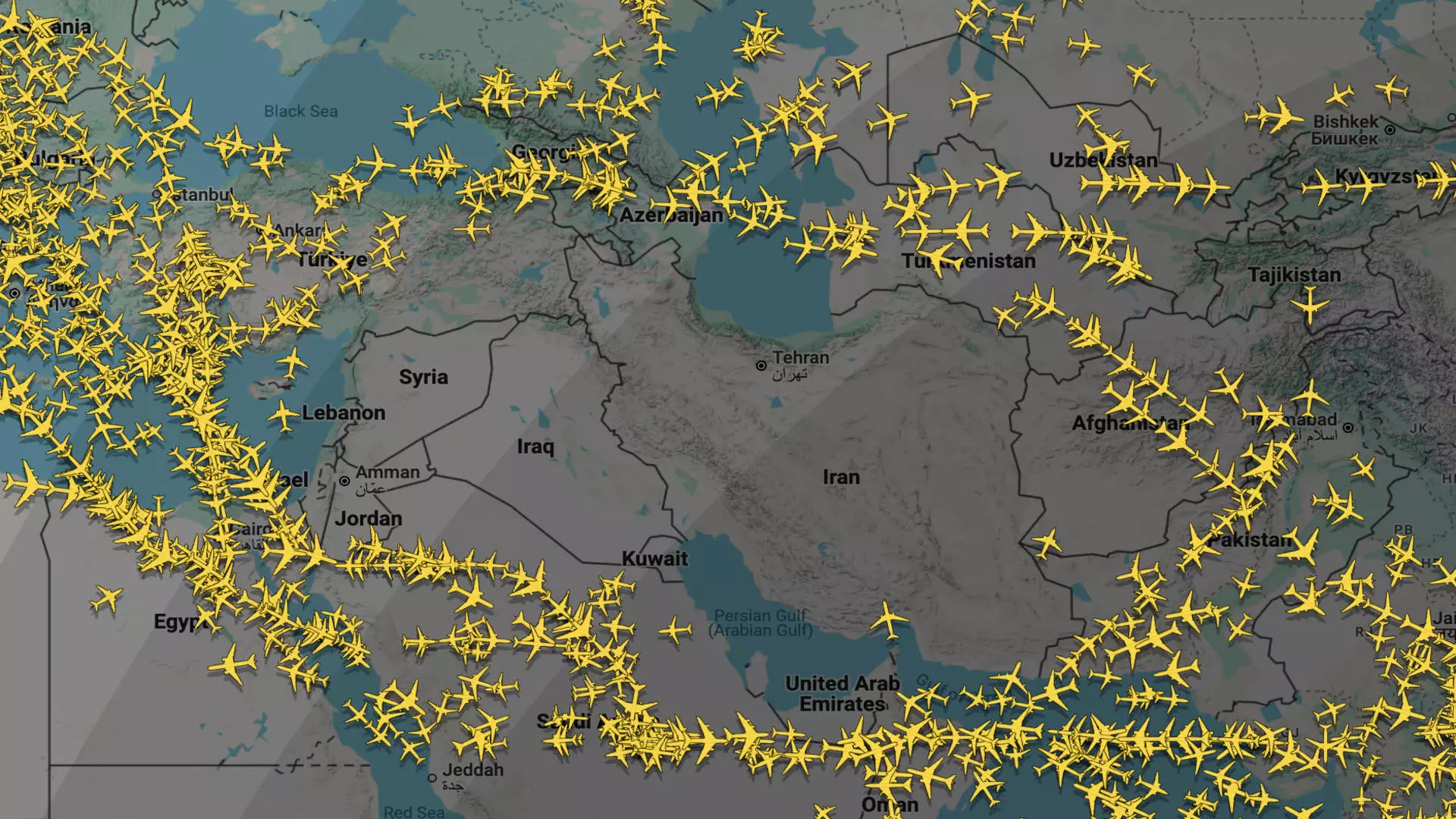The ongoing geopolitical instability in the Middle East has forced airlines into a precarious position, leading to widespread flight diversions and cancellations. Iran’s recent missile strike on a U.S. military base in Qatar has heightened tensions, resulting in over twenty commercial flights redirecting from their original course to Doha. Further complicating matters, the airspace over the United Arab Emirates has been closed, and Bahrain has temporarily grounded all flight operations. The impact of these aggressive maneuvers goes beyond immediate safety concerns; they reveal the larger implications of military conflict on global travel.
The Airline Response
In light of these developments, airlines are making tough decisions to ensure the safety of their passengers and crews. British Airways has canceled its Doha flights through midweek, emphasizing a steadfast commitment to safety as their top priority. This sentiment is echoed by major airlines such as Air France and Iberia, which have announced a hold on their scheduled services to various Middle Eastern destinations. The travel industry has always been sensitive to global conflicts, and there’s a palpable sense of uncertainty as airlines strategize amidst escalating tensions.
Economic and Operational Implications
The necessity for longer flight paths to circumvent volatile regions not only increases operational costs due to higher fuel consumption but also strains resources and planning for commercial airlines. This situation is compounded by the ongoing war in Ukraine, presenting airlines with a dual challenge of adapting to conflict zones while maintaining a reliable service. Such disruptions force carriers to draw on their operational resilience, reevaluating flight routes and logistical plans to accommodate the safety of their customers and crews.
Impact on Customer Experience
For travelers, the repercussions of these conflicts are palpable. Passengers find their travel plans thwarted, forced into uncertainty as airlines scramble to manage concerns over safety and logistical challenges. The emotional toll of such unpredictability should not be underestimated; anxiety regarding personal safety and the frustration of disrupted travel can overshadow the travel experience altogether. Airlines’ proactive communication efforts must prioritize transparency and clarity, offering their customers a navigation path through chaotic circumstances.
A Broader Perspective
While the primary focus remains on immediate safety, the broader implications of these changes reveal a trend towards adaptability in the airline industry. The willingness of airlines to make swift strategic maneuvers serves as a testament to their resilience in the face of significant challenges. These circumstances, although daunting, could foster innovation in flight planning, customer service, and operational protocols, ultimately reshaping how airlines navigate an increasingly connected yet precarious world.
The current landscape serves as a reminder of the fragility of global connectivity and the responsibilities that come with it. As the airline industry grapples with these external pressures, the resilience and adaptability displayed will define its trajectory in the years to come.


Leave a Reply